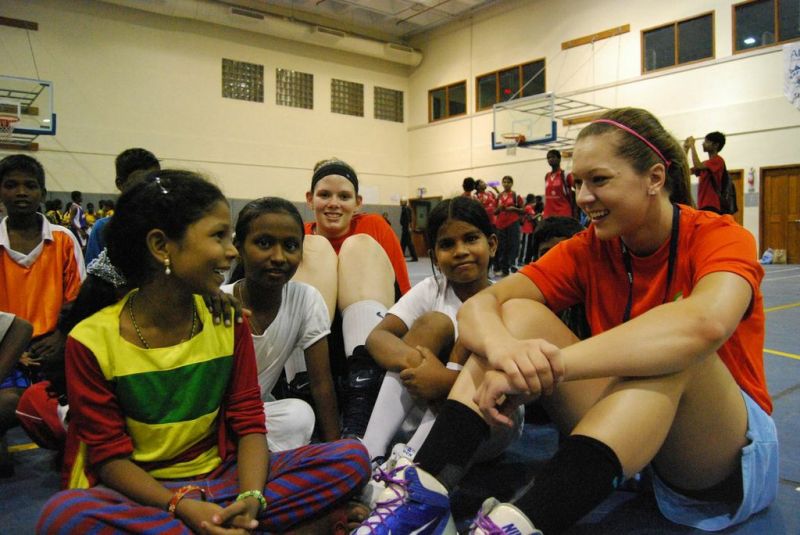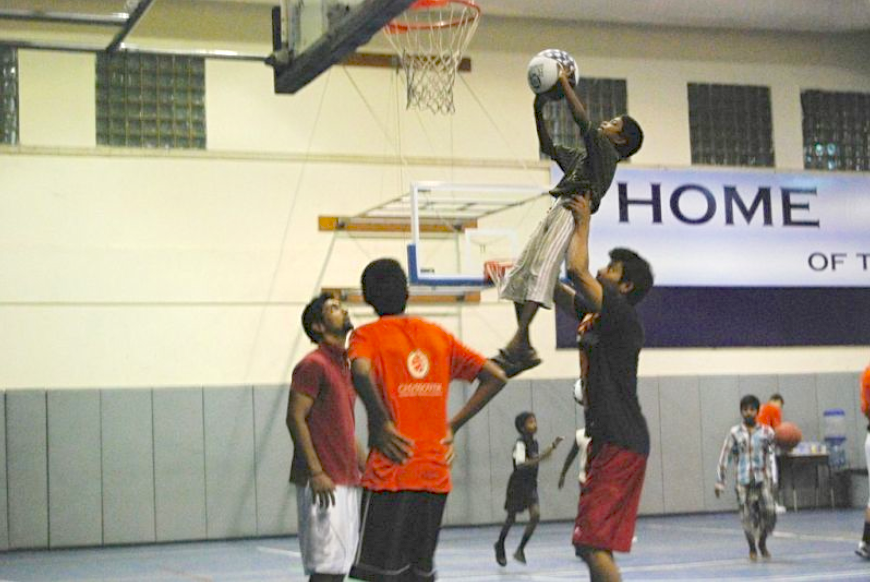Crossing Over for Inclusion
10-03-2013
by Dharini Dilip Kumar
The following article was posted on Chai with Lakshmi.
Repriya is 10 years old, studying in class five at Chennai Primary School. I ask her what her favourite sport is. She says basketball instantly. “It’s so much fun, we get to play and learn about how to work as a team. We also learn how to take things easy – to not let defeat get to us or be over whelmed by victory. Personally, it helps me participate better at school,” adds Repriya.
Repriya was one among twenty four students from her class who learnt basketball at the Crossover Academy, an organisation that is working towards providing the children of Chennai education in health and sports and using Basketball as a means of bringing holistic development.
—————————————————————————————————————————————————————
Faring poorly amongst middle income countries, India is ranked 112 in the Child Development Index. With primary importance given to classroom education, physical fitness isn’t seen beyond its face value. The casual attitude toward sports is of two extremes, a medium of fun or an easy ride into the college of your choice via quota. While there are families that can afford to focus on both sports and education – not all of them take up both with the context of holistic development. As for unprivileged families who struggle to provide adequate nutrition – when there is access to a school – education trumps sports, due to the belief that education is the logical and profitable choice in the long run.

Founded by Shaun Jayachandran, a US-based Indian in 2012, Crossover Basketball Academy aims to create a pan Indian initiative that educates children on good health, building their confidence and offering holistic development based on a curriculum designed by Shaun himself.
“In India there is a casual mindset when dealing with sports.Children learn by memorising what’s on the text, and aren’t taught to think for themselves. When asked, they reproduce what someone else has said. What is the end result of this type of education?,” says Shaun.
80 million Indian children drop out of school after completing basic education and take up petty jobs, causing UNICEF to call for a national emergency. By approaching education through a medium like sports, not only does the probability of keeping children invested in the classroom increase, but there is also a healthier, more attentive approach to learning -instead of blind memorisation.
“After engaging in a sport like basketball, my students act as a team. There is equal participation and better understanding,” says Ramabhadran, a Teach for India fellow,who has teamed up with Crossover. He is Repriya’s teacher.
This story is part of the ’1000 stories on Inclusive India’ campaign.
By gathering, writing and publishing 1000 positive stories on Inclusive India, my aim is to inspire millions of Indians to be Inclusive. For it is in Inclusive growth measures that we will see holistic and sustainable national progress. Support this campaign, give to help us cover costs. – Lakshmi Rebecca
—————————————————————————————————————————————————————
42 percent of Indian children are underweight, and India constitutes 40 percent of the world’s malnourished population. Through different initiatives like Crossover children from different economic and cultural backgrounds come together and are educated not just on sports, but also in healthy diets, confidence building and working an unbiased team of equals, who aren’t divided by economic and cultural bifurcations, set by society.
“At Crossovers we don’t strictly focus on the marginalised alone. Everyone plays together as a team, they learn as a team, and they act as equals. This way, when they go home, they aren’t affected extensively by social margins. They apply what is taught at camp to life. It also helps them look at education differently, and approach it differently,” says Shaun.
While the Crossovers’ camps last two weeks and takes place in Chennai, Shaun states his biggest challenges to be the absence of local support and parents’ mind-set of approaching sports itself.
With funding from international organisations such as The American Endowment Foundation, in addition to independent donors, It also hopes to partner with global profit organizations engage the local community and government in order to ensure long term sustainability.

Crossovers manages to bring children together through sports and open their minds to the bigger picture of health, education, sports and overall development. “Ever since she attended Crossovers, my daughter is a lot more confident, keen to participate in school and in sports. The camp hasn’t just improved her studies but she’s a lot more enthusiastic and energetic as well. I am really grateful,” says Sathya, Repriya’s mother.
The academy’s 2013 camp was held at American International School, Chennai. It saw over 250 children from different backgrounds in attendance the entire two weeks. “The school has been great. They give us the space to practice and equipment, they understand the core of what we’re doing and support us,” says Shaun.
With the amalgamation of education, health, sports and sportsman conduct, Crossover Basketball Academy is tackling the bigger picture of child development through one simple sport – Basketball. It is producing a fitter, healthier, smarter generation of Indian children, and, ushering the nation towards the United Nation’s 2014 goal to eliminate underdevelopment amongst children in India. Additionally, it is bringing children from different sections of society together through sports; breaking barriers and allowing them to see each other as fellow countrymen, without the tags and titles of a bifurcated society.
